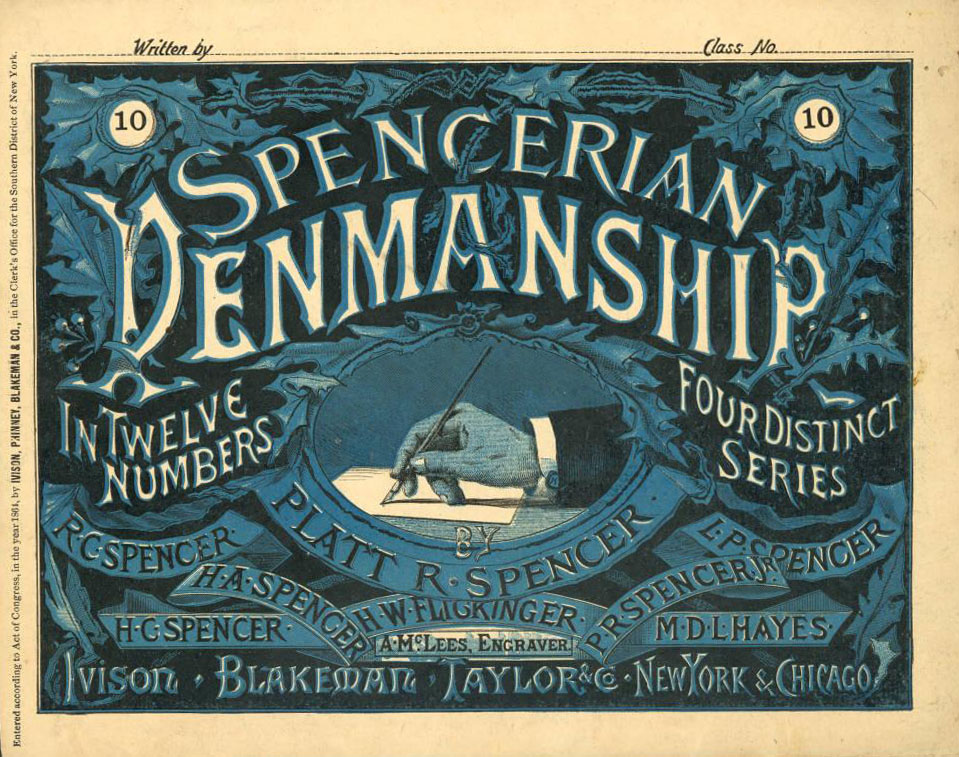Pleasing Penmanship from the Past

When most of us remember back to our school notebooks and homework, good penmanship may not be the first thing that comes to mind. But a recent addition to Ohio Memory–a mathematical exercise book dating to 1842–tells quite a different story. The book, which was purchased by Joseph Worley of Turtle Creek, Ohio, on November 28, 1842, was used for extensive arithmetic problems, geometrical calculations, geometry diagrams and handwritten notesincluding square and cube roots, calculation of area, volume, diameter and circumference, and the physics of falling bodies.

Worley, who according to historical records was born December 29, 1824, would have been around 18 years old when he composed this notebook, and presumably either in his final year of high school or first year of college. His elegant lettering throughout the book, using a formal style of cursive seen often in professional writing from that era, outlines complex subjects and solves in-depth problems in careful and confident letters. The pages are often interspersed with creative flourishes and decorative lettering introducing new topics, and the book will be a fun one to explore for anyone interested in decorative calligraphy and handwriting.
Worley shows up in the U.S. Census as a farmer in his adult life, so perhaps did not get the chance to use his talent for penmanship in his daily life. But many other Ohioans of the 19th and early 20th centuries similarly took the practice of penmanship very seriously, as documented on Ohio Memory.

Many of the letters appearing in Worley’s book look similar to scripts known as English round hand, Copperplate or Spencerian. The latter, which is sometimes referred to as “semi-angular” script, was developed by Ohioan Platt Rogers Spencer around the same time Worley would have been taking these notes. With Spencer’s first work, titled Spencer and Rice’s System of Business and Ladies’ Penmanship, published in 1848, Worley likely wouldn’t have learned and mastered the style by the early 1840s, but many similarities can be seen. Platt, who settled in northeast Ohio with his family around age 10, worked to support them as a young man as a clerk in local stores and businesses. In these positions, he actively practiced his penmanship and worked on developing his eponymous system. By the early 1860s, following reprinting of the now-renamed Spencerian or Semi-Angular Penmanship and other volumes, schools across the United States were teaching their pupils the Spencerian style, and it soon became the de facto style for clerks working for the U.S. government.

Following Spencer’s death in 1864, his style continued to be taught nationwide into the 20th century, and relics of this subject can be found on Ohio Memory. Myers University (later renamed Chancellor University, which has since closed) was known for a time during the second half of the 1800s as Spencerian College, and from their archives, we can see a report card from 1886, an 1893 school catalog withdetailed descriptions of courses including penmanship, and the copybook seen at right. An excellent publication on “Spencer & Rice’s System” is also available from the Geneva Branch of the Ashtabula County District Library, near where Spencer lived with his family. Other material related to penmanship and its teaching can also be found, including:
- The Ashland College catalog, which offers coursework in Elocution and Penmanship
- The 1932 Pen-art Club at Findlay High School, which met to study “the interesting art of lettering, engrossing, automatic shading, pen lettering and show card writing”
- A school teacher examiner’s record with penmanship scores for Meigs County teachers
With the popularization of the typewriter and subsequent technologies, practices in teaching penmanship have changed dramatically since Spencer’s and Worley’s times–but we can still take a moment to observe and enjoy the many examples of historical handwriting available through Ohio Memory!
Thanks to Lily Birkhimer, Digital Projects Coordinator at the Ohio History Connection, for this week’s post!



Leave a Reply
You must be logged in to post a comment.